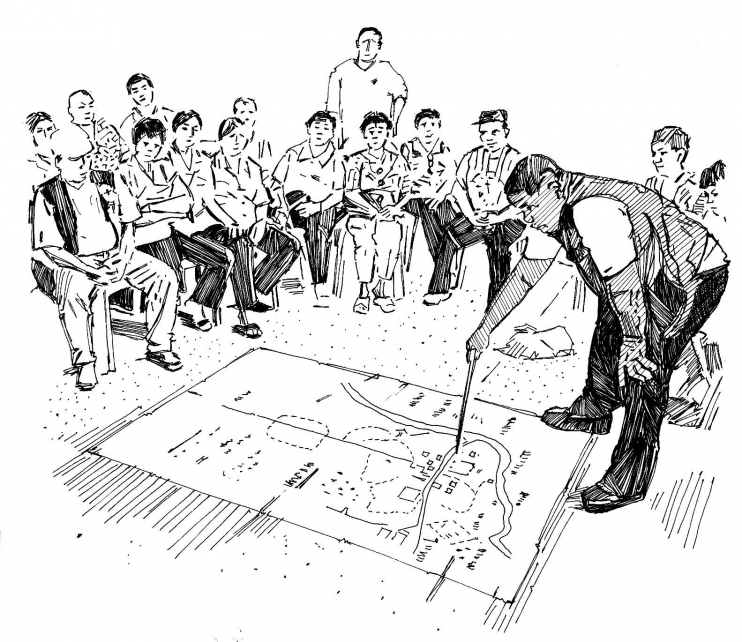02. Community mapping
Overview
A map of the community enables you to connect issues or problems with particular places and makes information easy to see. Maps are often easier to understand than words.
Mapping aids in:
- Identifying risks and exposure to risk
- Who and what are most exposed
- What are they exposed to
- Show existing problems and vulnerabilities (some might make the current threat more serious)
- Understanding resources within the community that might be useful in managing the epidemic
- Obtaining information about other sectors (such as livelihoods, shelter, WASH, infrastructure etc.) that might be influenced by the epidemic, or that might be useful in managing the epidemic
- Analysing links and patterns in the exposure and spread of the epidemic - which may include human-to-human transmission dynamics, exposure from animals, vectors or food, behavioural risks, and environmental health drivers.
It is important to create the map together with community members. This helps communities to be active and to be participating members in the care offered by the Red Cross Red Crescent and volunteers.
Community mapping is especially useful in epidemics because it helps to see where the biggest problems and needs are and helps to identify risks and resources such as health posts, emergency vehicles, access roads, shelters, water sources, and so on. Maps can be used to support prevention, preparedness and response to an epidemic.
How to make a community map
If possible, obtain or create a digital map of the community. If not available, it is possible to draw a simple spatial map that shows the community and all its key reference points. While keeping the fundamental principles of data protection, a community map should include the following:
- The whole community: concentrations of people, their houses, and who lives where
- The main shared/public locations in the community, such as schools, health centres, places of worship, water sources, markets, playgrounds and community meeting centres, communal livestock farming and livelihood areas such as cattle kraal, live bird markets, abattoirs, etc.
- The location of people who are most at risk [if you can identify them]
- Where the epidemic started and how it is spreading [if known and possible to identify]
- Health hazards and risks (e.g. improper rubbish disposal sites, large vector breeding sites)
Using the community map
The map can be used to mark new cases and/or referred cases. Do as follows:
- Form teams to cover certain areas of the map.
- Ensuring the participation of members from the community, each team should find out what it can about its area (how many people are sick, who is vulnerable, how many have been referred to health authorities, any other relevant information). If a zoonotic disease outbreak is suspected or implicated, find out who among the community members is keeping animals, how many animals are sick or have died, and/or presence of vectors in households, environment or even in surrounding water bodies. Work with your manager to target and prioritize those who are most at risk. This will require targeting geographically and, within those identified areas, targeting the most in need based on a vulnerability and capacity analysis that includes a gender and diversity analysis.
- Combine the maps of different teams. In doing this, you will be able to see:
- Which areas of the epidemic you are covering, which areas you may not be covering, and details of each area. This will help you plan your actions. Some of these actions might include: environmental clean-up; distribution of bed nets; immunization campaigns; quarantine, animal biosecurity measures and other activities associated with managing the epidemic.
